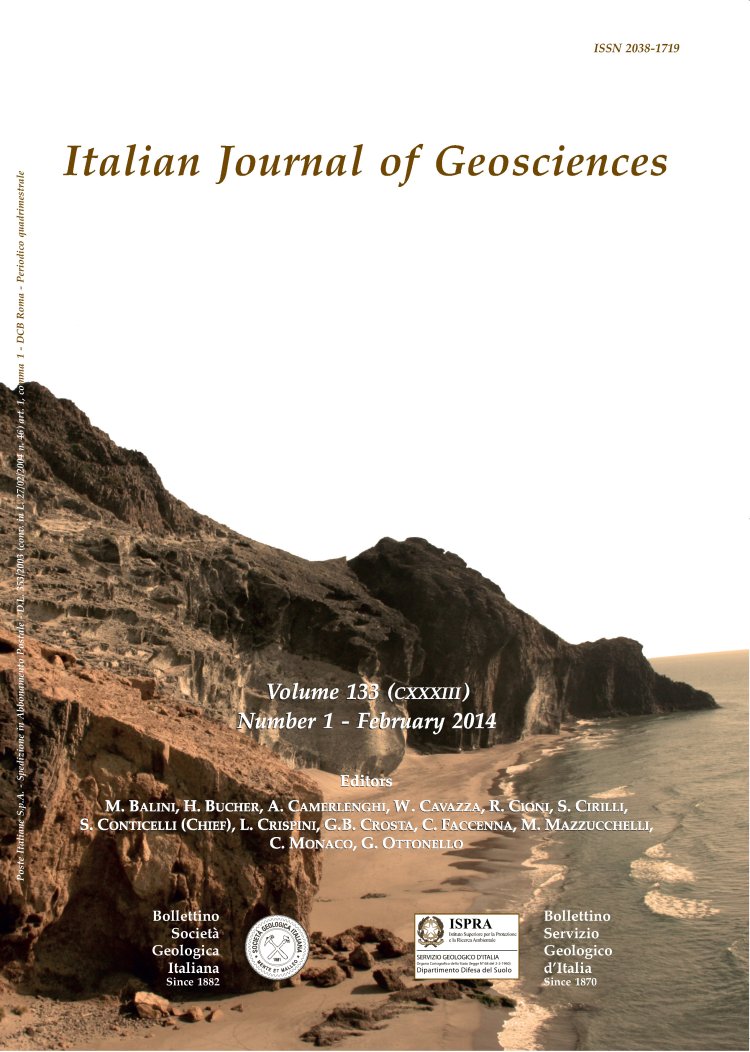
Ichnocoenoses in the Macigno turbidite basin system, Lower Miocene, Trasimeno (Umbrian Apennines, Italy)
Paolo Monaco(*) & Tiziana Trecci(**)
(*) Dipartimento di Scienze della Terra, Università degli Studi di Perugia, Piazza dell'Università, 1 - 06100 Perugia; pmonaco@unipg.it (**) Via Campaccio, 37/B - 52044 Cortona (Arezzo); tizianatrecci@
libero.it
Volume: 133 (2014) f.1
Pages: 116-130
Abstract
Facies analysis and ichnology in a foredeep system of the Lower Miocene Macigno Formation, N of Lake Trasimeno (Umbrian Apennines, Italy), show that ichnoassemblages, developed into several ichnocoenoses - typical ichnotaxa and their stratinomic position in different facies - can be diagnostic indicators for siliciclastic and carbonatic gravity flow deposits. Ichnologic analysis allows defining palaeoecological adaptations in deep-sea burrower organisms, as already applied successfully in other deep-sea environments of Cenozoic turbiditic successions of Italy and Spain.
Fourteen sections of the three members of Macigno Formation, some of these revisited in this work, contain ichnocoenoses, differing among distal lobes, inter-lobes deposits (hemipelagic mud), lobe fringes and mud turbidites. The use of ichnocoenoses (e.g. the Halopoa-Spirophycus-Spirorhaphe ichnocoenosis with the fucusopsis preservation of the ichnogenus Halopoa), described here for the first time, underline, rather than classical ichnofacies (Nereites) or ichnosubfacies, the usefulness of ichnology in foredeep basin analysis.
Keywords
Get Full Text